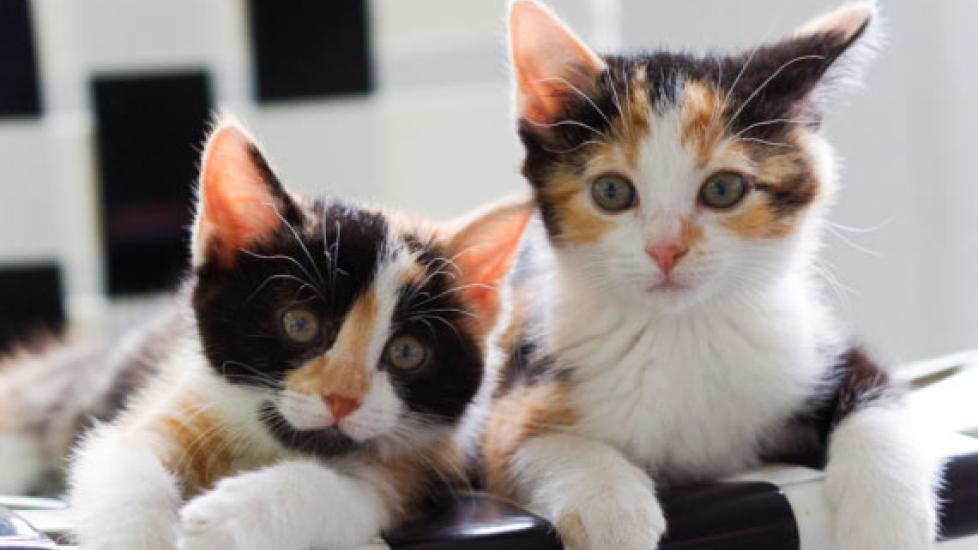How to Determine the Sex of a Kitten
By Jennifer Coates, DVM
You’ve got a new kitten? Congratulations! Is it a girl or a boy? Are you sure?
Stories of the feline “Max” who turns out to be a “Maxine” abound. The reason is simple. Determining the sex (or “sexing” as it is often called) of a kitten isn’t as easy as you might think. And once a sex has been assigned, it may not be rechecked as the kitten matures. Let’s take a look at the best way for pet parents to determine, or confirm, the sex of their kittens.
Older Kittens
If your cat is 8 weeks of age or older, the procedure is fairly straightforward. Pick a time when your cat is most likely to be calm—after a meal is a good bet. Sit on a chair and lightly hold your cat on your lap however he or she feels most comfortable. Gently lift the tail and take a look at your cat’s rear end. Focus on two things:
1. The distance between the anus and the genital opening.
2. The shape of the genital opening.
Here’s a diagram to help.

Notice that the distance between the anus and the opening to the penis in males is bigger in comparison to the distance between the anus and the opening to the vulva in females. Also, the penile opening looks like a circle while the vulvar opening is more of a line.
Here are two features NOT to use when sexing a kitten. The penis itself is not normally visible in male cats and can be very hard to feel, especially in young kittens. And while the testicles should, in theory, be palpable within the scrotum (lying in that space between the anus and penile opening), they may be too small to identify. Also, many kittens are neutered at a very young age these days. Therefore, a lack of testicles doesn’t necessarily mean your kitten is female.
Younger Kittens
Sexing kittens who are under 8 weeks of age is even more difficult because the structures you are looking at are tiny and relatively underdeveloped. Thankfully, kittens this young should still be with their littermates, and comparing same-aged individuals can really help you determine what male and female kitten anatomy looks like. All the same rules mentioned above apply, but make sure you don’t overstress young kittens by removing them from their mom and littermates for more than five minutes at a time.
Sexing kittens who are under 8 weeks of age is even more difficult because the structures you are looking at are tiny and relatively underdeveloped. Thankfully, kittens this young should still be with their littermates, and comparing same-aged individuals can really help you determine what male and female kitten anatomy looks like. All the same rules mentioned above apply, but make sure you don’t overstress young kittens by removing them from their mom and littermates for more than five minutes at a time.
Coat Color
Some coat colors occur more frequently in cats of a certain sex. Tortoiseshell (usually orange and black) and calico (usually white, orange, and black) cats are almost always female since these coat colors require the presence of two X chromosomes. (Remember back to your high school biology. Individuals with two X chromosomes are female while those with one X and one Y chromosome are male). In a genetic aberration, some male cats have two X chromosomes and one Y chromosome, which would allow them to be tortoiseshell or calico, but this is an incredibly rare occurrence. Orange tabby (orange and white striped) cats are more likely to be male than female, but this connection isn’t as strong as it is for female torties and calicos.
Accurately determining the sex of a kitten is important, and not just to avoid naming mishaps. The likelihood of some health and behavioral problems occurring varies with an individual’s sex. For example, while urinary tract disease is common in all cats, males are at a much higher risk of developing a potentially fatal urinary tract blockage in comparison to females.
If you have any doubts as to your cat’s sex, ask your veterinarian to take a look for you. And if you end up being surprised by the answer, have no fear. Cats of both sexes make wonderful, loving companions.
See Also
More to Explore
Choosing the Best Name for Your Kitten
